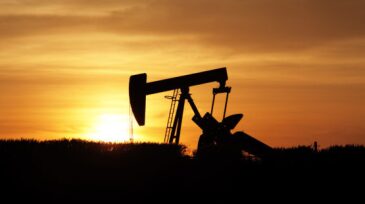Environment
The Norwegian Ministry of Energy has approved the Phase 2 expansion, which is expected to increase carbon dioxide storage capacity from 1.5 million tonnes to 5 million tonnes.
DNV’s carbon capture and storage outlook forecasts a massive shortfall in the projects necessary to help the world reach net-zero emissions by 2050.
Buoy-based camera footage, analyzed by artificial intelligence, can help reduce the risk of birds colliding with offshore wind farm turbines.
-
Engineers from the Monterey Bay Aquarium Research Institute have demonstrated a new use for the institute's long-range autonomous underwater vehicles—detecting and tracking oil spills.
-
Oregon Gov. Kate Brown issued an executive order blocking offshore drilling, joining several other states trying to shield themselves from the Trump administration’s plan to drill for oil and gas off the US coast.
-
Biological-based emissions control has promising advantages such as the potential for a low carbon footprint, low secondary pollutants such as NOx and SOx, lower energy demands, and lower cost.
-
An oil spill that has been quietly leaking millions of barrels into the Gulf of Mexico has gone unplugged for so long that it now verges on becoming one of the worst offshore disasters in US history.
-
Proposed changes would modify EPA's August 2016 final rule, "Oil and Natural Gas Sector: Emission Standards for New, Reconstructed, and Modified Sources." The proposal has been submitted for publication to the Federal Register. Following that publication, the EPA will accept comments for 60 days.
-
The 1972 Clean Water Act has driven significant improvements in US water quality, according to the first comprehensive study of water pollution over the past several decades by researchers at UC Berkeley and Iowa State University.
-
Bob Dudley, the chief executive of BP, took charge of the London-based company when it was struggling to survive after the 2010 explosion of the Deepwater Horizon oil rig in the Gulf of Mexico. Dudley recently talked about the oil industry, climate change pressures, and technology.
-
Stanford researchers have mapped local susceptibility to man-made earthquakes in Oklahoma and Kansas. The new model incorporates physical properties of the Earth’s subsurface and forecasts a decline in potentially damaging shaking through 2020.
-
2019 SPE President Sami Alnuaim will spend the next year forging new relationships to promote the industry’s role in addressing environmental issues.
-
The emissions intensity of upstream Canadian oil sands production will continue to decline in coming years, falling to 30% below 2009 levels by 2030, a new report by business information provider IHS Markit says.













